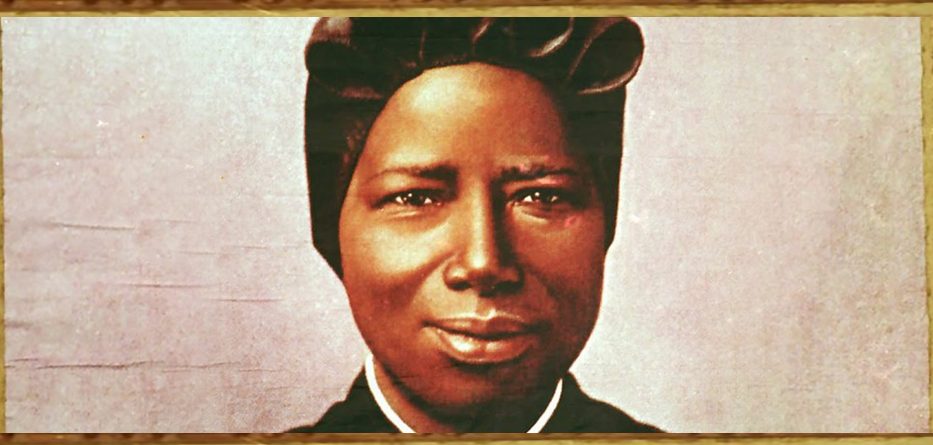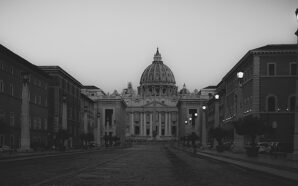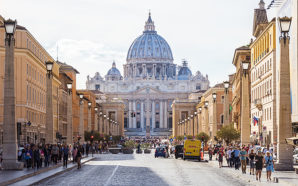Her story demonstrates that from marginal places, history itself can change course, that faith gives meaning to life
Europe has its patron saint: Benoît de Nursie (since Oct. 24, 1964). It even has co-patron saints: Cyril and Methodius (since Dec. 24, 1980); Bridget of Sweden, Catherine of Sienna and Theresa Benedict of the Cross (since Oct. 1, 1999).
Each of them evokes, through his or her story, the important axes of both the Christian and secular entwined in the history of the European continent.
Wouldn’t it be timely and worthwhile for Africa to have a symbol that would evoke its history of suffering and carry a promise of hope?
The paradox of Africa is this, for its people it is a valley of tears while for others, a source of wealth.
Hope is present in Africa: everyone wants to get something from it. In this regard the young people of Africa represent great hope, even though they are also victims of the enormous suffering mentioned above.
What can be done so that this hope can benefit Africa itself?
Benedict XVI was an apostle of this hope when he appealed for Africa to be regarded with faith and charity (cf. apostolic exhortation, Africae munus, 13): a precious treasure is present in the African soul. In Luanda, he linked the word “hope” to Africa.
Josephine Bakhita, an icon of hope
As a force of hope, the Church in Africa cannot ignore the degradation suffered by this continent. More than any other institution, the Church must offer Africa resources to make sense of its suffering and to give it the means to find hope.
Which significant figure can help to achieve this mission?
There are saints from Africa. In the ancient world, there are the martyrs of Sicily, Perpetua and Felicity (March 7, 203), Zeno of Verona (362-371), Pachomius (348), Macarius (390).
And there are the martyrs of Mombassa; the martyrs of Uganda; the blessed Marie-Clemetine Anuarite Nengapeta, Victoria Rasoamanarivo, Isidore Bakanja, Cyprian Michael Tansi. And there is Saint Josephine Bakhita.
Of these, St. Josephine Bakhita can be a symbol of both degradation and of hope. In declaring her a saint, John-Paul II gave her to Africa as a “model and patron in heaven.”
During his first apostolic visit to Africa, as the airplane descended to Yaoundé airport in Cameroon on March 17, 2009, Benedict XVI said these powerful words: “Africa suffers disproportionately… The life of St. Josephine Bakhita offers a shining example of the transformation that an encounter with the living God can bring to a situation of great hardship and injustice. In the face of suffering or violence, poverty or hunger, corruption or abuse of power, a Christian can never remain silent.”
Referring to the suffering that Josephine Bakhita endured in her life and the joyous ending of her story thanks to her faith in Christ, the encyclical on hope, Spe Salvi, presents her as an African symbol of Christian hope.
Josephine was abducted by Arabs between the ages of 7 and 9, and sold as a slave. She was cruelly treated and beaten every day until she bled from the wounds inflicted. She was also subjected to scarification and carried 144 deep scars on her body for her whole life.
However, one of her masters treated her differently. Left in the care of the Canossian sisters in Venice, she heard of a God above all others, who loved her and who had – like her – been subjected to suffering and degradation.
Her new-found knowledge of, and encounter with, God’s love changed her life. From then on, she had hope. She became a Christian and a nun. She received the liberation of Christ (cf. Spe salvi, 3).
St. Josephine Bakhita can carry Africa’s hope. Her story makes transparent the tragic destiny of Africa, which is still subjected to slavery and to degradation in many respects.
The life of this African saint is good news, especially for young Africans, because it announces where rebirth can emerge. The rebirth of Africa can only come from Christ, a gentle and humble master, different from the masters who enslaved us and who enslave us still. The path to freedom is the path of justice, reconciliation and peace.
Josephine Bakhita’s story demonstrates that, from marginal places, history itself can change course; that faith gives meaning to life, and directs it towards fulfilment.
At the heart of Africa’s anguish, faced with the complex issues of development, Josephine Bakhita is a symbol of hope: she reveals that the path to reconciliation begins with a memory that has been transfigured.
In the deep night of Africa’s crisis, Josephine Bakhita recalls to us the power of that undiminishing Light, which dissipates all darkness and irradiates with joy all those who allow it to reach them: the Light of Christ, the Hope of Africa.
Father Rodrigue Gbédjinou is a priest of the Archdiocese of Cotonou and a specialist in dogmatic theology.
By Father Rodrigue Gbédjinou, reproduced with his permission and La Croix International.








